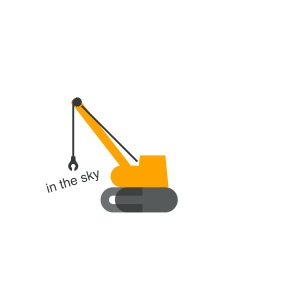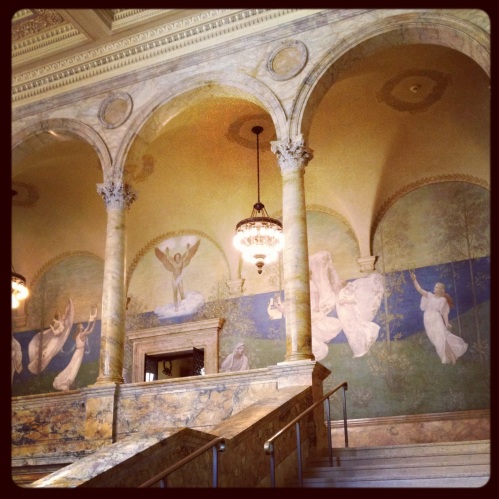
A day or so after sitting in the public library Palazzo Sormani in Milan, which is
” la principale biblioteca del Sistema Bibliotecario Urbano e una delle maggiori biblioteche di pubblica lettura della città” – one of the cities main libraries and a one of its largest, I took this picture from the roof of the Duomo. As I looked out, I thought of all the people busy in the nooks and crannies of the hot city whose activities are essentially invisible from the top of the city’s iconic landmark. There were two people, however, who had made significant impressions on me the day I spent in the library Palazzo Sormani, a patron and a librarian.
The first was a man who had been sitting across from me at a table in the periodicals area; we had both gravitated to the spot by the open window through which a sporadic cool breeze teased. I judged him to be in his early thirties. For the weather, he seemed overdressed: long-sleeved tee shirt and jeans, and his speech, features and articles he carried indicated he was from North Africa. He spent his time in intense concentration huddled over a small notebook copying and recopying sentences from a book.
Across the room, a friend of his inquired in a mash-up of Italian and perhaps French how to find information. The librarian, a thin, middle-aged woman demonstrated the process as they both peered at a computer screen. He tried; she repeated; he tried and she repeated patiently until he seemed to get it.
I, too, was there in search of good examples. I had taken some plays off the shelf. I looking at the cadence of written language Italian-style in contemporary drama; the writing slowed down the pace of the words that spun around my head daily in coffee shops and on the tram. It was reassuring and enlightening to have the world pinned to the page so I had time to study. I had a similar goal to the (apparently) North African patrons and I also sought models to show me.
Copying, imitation and re-reading come from the maligned “drill and kill” school of learning, a system I chafed at myself in school. What made the difference in Palazzo Sormani that day was, in my opinion, the earnest motivation of the two men and myself to decipher the world into which we had immersed ourselves.
It has been a year this week since I sat in that library and I am just getting back to my summer 2012 journal. I hope the two men found the mastery they sought. I am still on my journey. I had, in fact, hoped to write about my experiences spending time in Milan’s public libraries, but when I returned I was given a pressing, time crunched opportunity to learn some software, then teach it to a group of about 70 adults. I did indeed teach myself the software with a combination of trial and error and YouTube videos. I got a message late in the process of preparation that, due to time constraints, I would, unfortunately, only have 90 minutes to teach groups of 20 something that had taken me weeks to learn. Unsurprisingly, ninety minutes did not prove enough;participants begged for hands-on practice, time to experiment and time for question and answer sessions: essentially demanding time for copying, imitation and, in a sense, re-reading.
What are you motivated to learn? Does this cycle help you?




